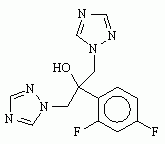NEW YORK -- By Jan. 6, the United Nations reported that more than $4 billion had been pledged to aid tsunami victims and help rebuild the devastated Asian region. That sum included several million dollars donated to the American Red Cross International Response Fund on behalf of the nation's leading pharmacy retailers, their employees and customers.
CVS pledged $1 million in cash. In addition, company spokesman Todd Andrews said that CVS President and Chief Executive Officer Tom Ryan on Jan. 6 also sent out a communication to all 145,000 CVS associates alerting them of the opportunity to contribute to the relief effort. CVS, which also donated products like toothpaste, toothbrushes, sunscreen, soap and other disinfecting products, agreed to match its employee donations up to $500,000.
Walgreens spokeswoman Tiffany Bruce said that the retailer also made an announcement to its employees that it would gather, coordinate and send their personal contributions to relief efforts, matching employee contributions up to $1,000.
Rite Aid, beginning the week of Jan. 10, initiated a chainwide fund-raising effort where customers could buy $1 disaster relief certificates, with all proceeds donated to the American Red Cross. It also gave customers who applied for a manufacturer's rebate through the Rite Aid Web site the option to donate the amount of the rebate to tsunami relief efforts. And the Rite Aid Foundation also pledged $50,000 in cash.
"Our hearts go out to the victims, families and communities affected by this devastating tragedy," said Rite Aid President and Chief Executive Officer Mary Sammons.
Wal-Mart, which made a $2 million donation to the American Red Cross, also established points of collection in all its Wal-Mart stores, supercenters, Neighborhood Markets and Sam's Club locations for its associates and customers. It also reduced fees for wiring money to help family and friends in the affected areas.
Target Stores, which donated $1 million to the American Red Cross, also contributed to relief efforts with employees in Target offices in Southeast Asia donating volunteer time and making product donations.
The National Association of Chain Drug Stores Foundation gave $25,000 to the American Red Cross to support the tsunami relief efforts. In addition, to assist retail pharmacies in quickly establishing collection campaigns of their own, the NACDS Foundation created UPC-coded donation vouchers in $1, $3 and $5 increments. Funds raised through the sale of the vouchers at retail pharmacies were to be given by the NACDS Foundation to organizations working in areas affected by the tsunami.
Drug makers also are contributing not only cash, but also much-needed medical supplies, including:
* Eli Lilly's donation of prescription medicines, including antibiotics and insulin.
* GlaxoSmithKline spledge of 2 million doses of antibiotics and 600,000 doses of typhoid and hepatitis A vaccines.
* Pfizer's contribution of about $25 million worth of health care medicines, including the anti-infectives Zithromax, Zyvox and Diflucan.
COPYRIGHT 2005 Reproduced with permission of the copyright holder. Further reproduction or distribution is prohibited without permission.
COPYRIGHT 2005 Gale Group



